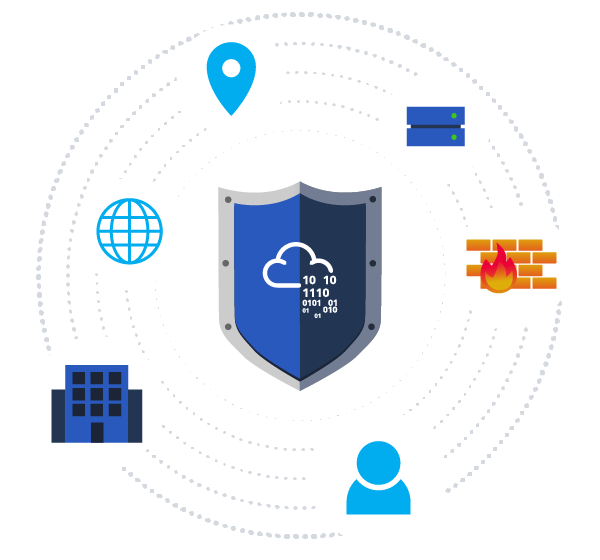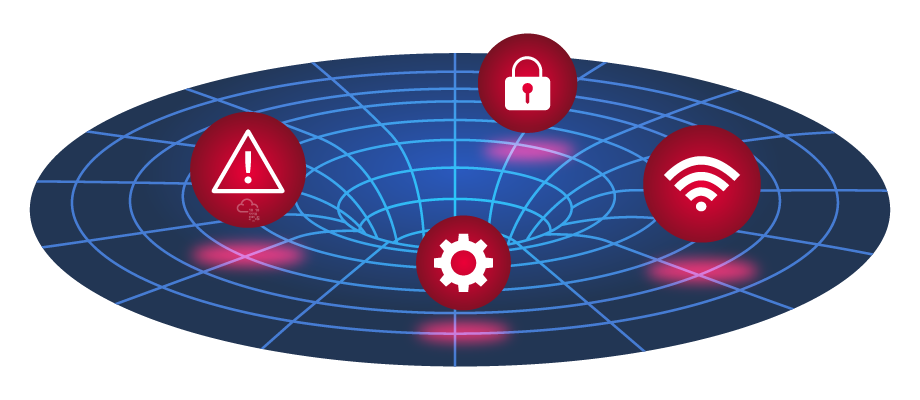Network Security Solutions

Network security solutions could be software or hardware appliances used to monitor, detect and prevent malicious activities within the network. It focuses on protecting clients and devices connected to the cooperation network. The network security solution includes but is not limited to:
- Network Firewall
- SIEM
- IDS/IPS
Network Firewall

A firewall is the first checkpoint for untrusted traffic that arrives at a network. The firewall filters the untrusted traffic before passing it into the network based on rules and policies. In addition, Firewalls can be used to separate networks from external traffic sources, internal traffic sources, or even specific applications. Nowadays, firewall products are built-in network routers or other security products that provide various security features. The following are some firewall types that enterprises may use.
- Packet-filtering firewalls
- Proxy firewalls
- NAT firewalls
- Web application firewalls
Security Information and Event Management (SIEM)

SIEM combines Security Information Management (SIM) and Security Event Management (SEM) to monitor and analyze events and track and log data in real-time. SIEM helps system administrators and blue teamers to monitor and track potential security threats and vulnerabilities before causing damage to an organization.
SIEM solutions work as log data aggregation center, where it collects log files from sensors and perform functions on the gathered data to identify and detect security threats or attacks. The following are some of the functions that a SIEM may offer:
- Log management: It captures and gathers data for the entire enterprise network in real-time.
- Event analytics: It applies advanced analytics to detect abnormal patterns or behaviors, available in the dashboard with charts and statistics.
- Incident monitoring and security alerts: It monitors the entire network, including connected users, devices, applications, etcetera, and as soon as attacks are detected, it alerts administrators immediately to take appropriate action to mitigate.
- Compliance management and reporting: It generates real-time reports at any time.
SIEM is capable of detecting advanced and unknown threats using integrated threat intelligence and AI technologies, including Insider threats, security vulnerabilities, phishing attacks, Web attacks, DDoS attacks, data exfiltration, etc.
The following are some of the SIEM products that are commonly seen in many enterprises:
- Splunk
- LogRhythm NextGen SIEM Platform
- SolarWinds Security Event Manager
- Datadog Security Monitoring
- many others
Intrusion Detection System and Intrusion Prevention System (NIDS/NIPS)

Network-based IDS/IPS have a similar concept to the host-based IDS/IPS. The main difference is that the network-based products focus on the security of a network instead of a host. The network-based solution will be based on sensors and agents distributed in the network devices and hosts to collect data. IDS and IPS are both detection and monitoring cybersecurity solutions that an enterprise uses to secure its internal systems. They both read network packets looking for abnormal behaviors and known threats pre-loaded into a previous database. The significant difference between both solutions is that the IDS requires human interaction or 3rd party software to analyze the data to take action. The IPS is a control system that accepts or rejects packets based on policies and rules.
The following are common enterprise IDS/IPS products
- Palo Alto Networks
- Cisco’s Next-Generation
- McAfee Network Security Platform (NSP)
- Trend Micro TippingPoint
- Suricata
For more information about IDS/IPS, visit the reference link.
